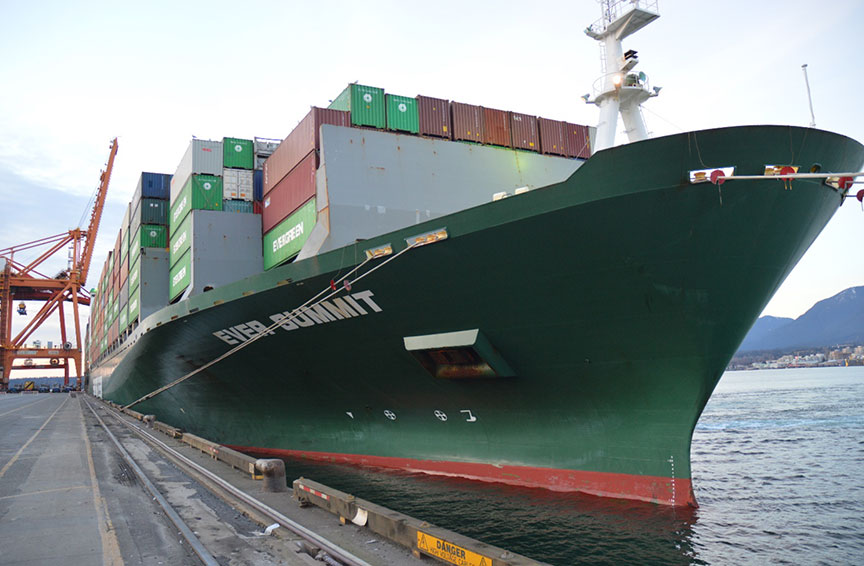Striking of berth and shore gantry crane
Container vessel Ever Summit
Vanterm, Port of Vancouver
Vancouver, British Columbia
Container vessel Ever Summit
Vanterm, Port of Vancouver
Vancouver, British Columbia
28 January 2019
The occurrence
On , the container vessel Ever Summit was berthing under the conduct of a pilot at Vanterm in the Port of Vancouver, British Columbia (BC), with 2 tugs assisting when the vessel struck the berth and a nearby shore gantry crane. The vessel, berth, and crane were damaged. There were no injuries or pollution.
Media materials
News release
Investigation into 2019 berth strike highlights concern about terminal infrastructure capacity
Read the news release
Deployment notice
TSB deploys a team to the site of a marine occurrence at Vanterm, Vancouver, British Columbia
Richmond, British Columbia, 28 January 2019 — The Transportation Safety Board of Canada (TSB) is deploying a team of investigators today, to Vanterm Berth No. 6, Vancouver, British Columbia, where the container vessel Ever Summit struck a gantry crane while berthing. The vessel and the crane sustained damage. The TSB will gather information and assess the occurrence.
Investigation information
Download high-resolution photos from the TSB Flickr page.
Class of investigation
This is a class 3 investigation. These investigations analyze a small number of safety issues, and may result in recommendations. Class 3 investigations are generally completed within 450 days. For more information, see the Policy on Occurrence Classification.
TSB investigation process
There are 3 phases to a TSB investigation
- Field phase: a team of investigators examines the occurrence site and wreckage, interviews witnesses and collects pertinent information.
- Examination and analysis phase: the TSB reviews pertinent records, tests components of the wreckage in the lab, determines the sequence of events and identifies safety deficiencies. When safety deficiencies are suspected or confirmed, the TSB advises the appropriate authority without waiting until publication of the final report.
- Report phase: a confidential draft report is approved by the Board and sent to persons and corporations who are directly concerned by the report. They then have the opportunity to dispute or correct information they believe to be incorrect. The Board considers all representations before approving the final report, which is subsequently released to the public.
For more information, see our Investigation process page.
The TSB is an independent agency that investigates air, marine, pipeline, and rail transportation occurrences. Its sole aim is the advancement of transportation safety. It is not the function of the Board to assign fault or determine civil or criminal liability.

